On June 7th, the city of Tokyo will take a trip back to the Edo period! Experience Japanese history at the Sanno Festival

The Sanno Festival, the first of the three major Edo festivals, is held every two years, and this year will be the first time in six years that the main festival will be held in a grand manner. It is one of the largest traditional events in Tokyo, and a grand festival to pray for peace. In particular, the Shinko Festival to be held on June 7, 2024, will be a spectacular event! A 300-meter procession of 500 people dressed in imperial costumes will parade along a 23km route that will take them thr...
History of the Sanno Festival
The Sanno Festival began in the Kamakura period to entertain the gods and pray for peace in the year. The current "Shinko Festival" is said to have begun in the Edo period.

Sanno Festival in the Edo period (owned by the Hie Shrine Treasure Hall)
It is said that in order to make Edo a big city, the festival floats were modeled after Kyoto's Gion Festival in order to revitalize what was then a rural area and to prevent epidemics. Not only was it a religious ceremony, but it was also an event to enjoy for the townspeople as a display of Edo's prestige. At that time, the Sanno Festival was permitted to enter Edo Castle, and with the support of the shogunate, it became a grand event. There were as many as 45 floats, and each town competed to add decorations, and at one point an elephant show was even included in the procession - it was truly extravagant!
The highlight of the Sanno Festival is the Shinko Festival
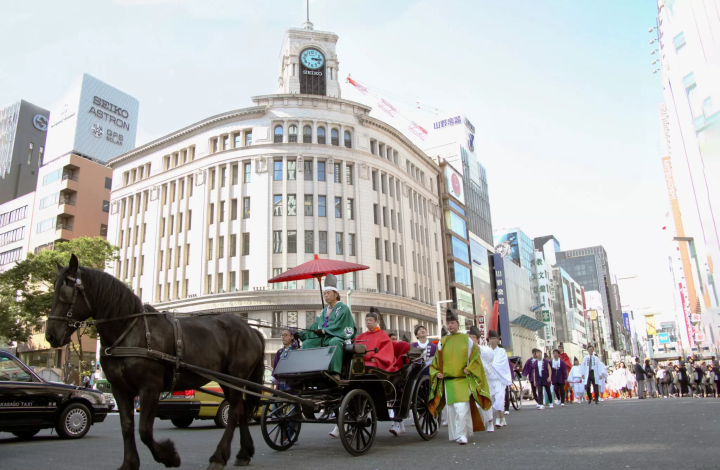
The highlight of the Sanno Festival is undoubtedly the Shinko Festival held on June 7th. A procession dressed in beautiful imperial attire parades from Hie Shrine around the Imperial Palace. The 300-meter festival procession goes around the towns where the parishioners of Hie Shrine live. It takes nine hours to travel a distance of about 23km around the Imperial Palace, from Yotsuya in the west, Nihombashi in the east, and Shimbashi in the south. In fact, all of the areas that the procession goes through are places that were "inside" the old Edo Castle. It's fun to compare the old Edo and the current city of Tokyo from that perspective.
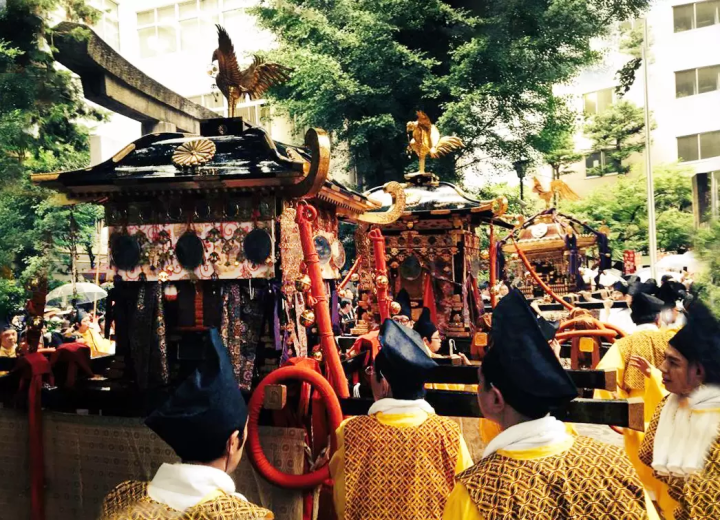
Gohoren (Imperial Palanquin)

Approximately 500 representative officials and young parishioners will participate, along with two Gohoren (shrines), one Miyamikoshi (portable shrine), and five floats.
Shinko Festival procession route
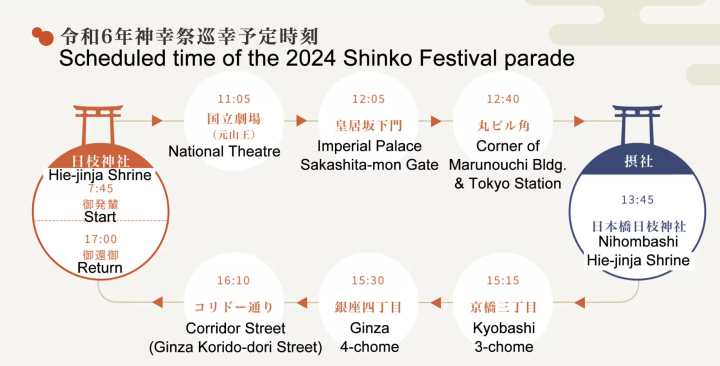
The Shinko Festival procession route (from the Hie Shrine official website)
To make it easier to follow the procession route, a PDF map (in Japanese) can be downloaded from the official Hie Shrine website, and there is also a Google Maps app (in Japanese).
① Route map
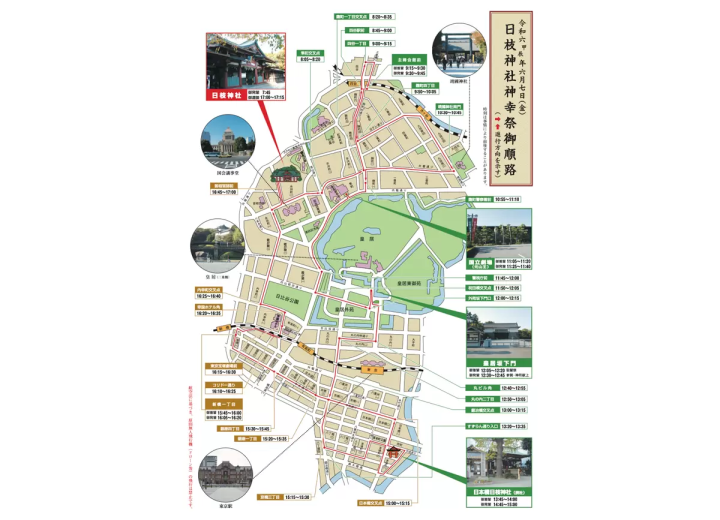
https://www.tenkamatsuri.jp/_assets/pdf/junko_junro.pdf
② Digital map of the tour route (app)
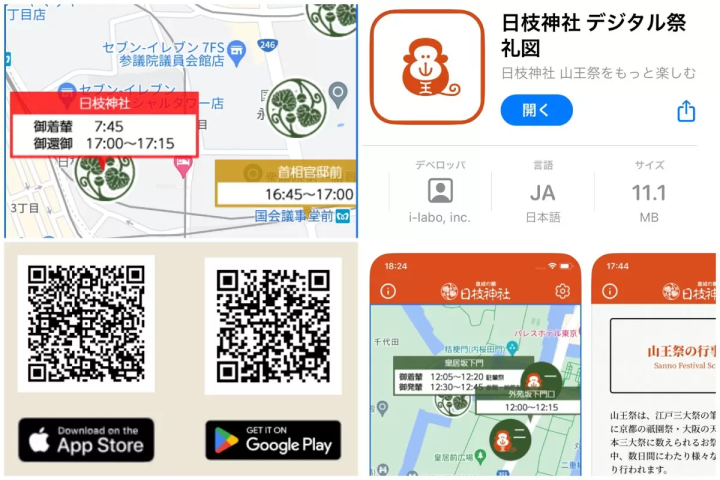
(Top left) Map within the app (Bottom left) QR code for download
3) Chiyoda Ward Tourism Association's "Sanno Festival How to Enjoy Guide"
The Chiyoda City Tourism Association has published a "Guide to Enjoying the Sanno Festival." It contains feature articles and a guide map that are easy to understand even for first-time visitors, so be sure to check it out!
https://visit-chiyoda.tokyo/sannoumatsuri/
Recommended viewing spots for the Shinko Festival procession
① Hie Shrine
There are many spots from which you can watch the Shinkosai procession. If you can get up early, you can watch the Shinkosai procession start early in the morning at Hie Shrine in the Akasaka/Nagatacho area.
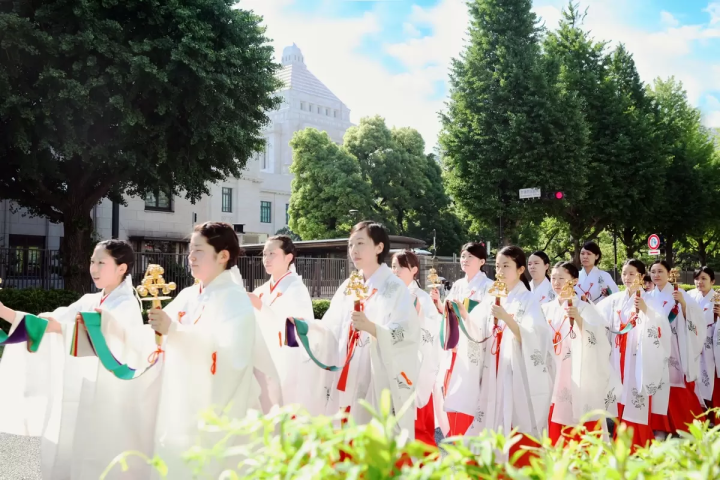
The procession starts from Hie Shrine and passes in front of the National Diet Building.
② National Theatre
Another recommended spot is in front of the National Theatre. The procession stops here for a while, so you can take photos of the Gohokoshi and Miyamikoshi. After that, the procession proceeds along Uchibori-dori, the moat of the Imperial Palace, to the outer gardens of the Kokyo Gaien National Garden. There are no traffic lights for a while, so you can enjoy the full length of the 300m procession!
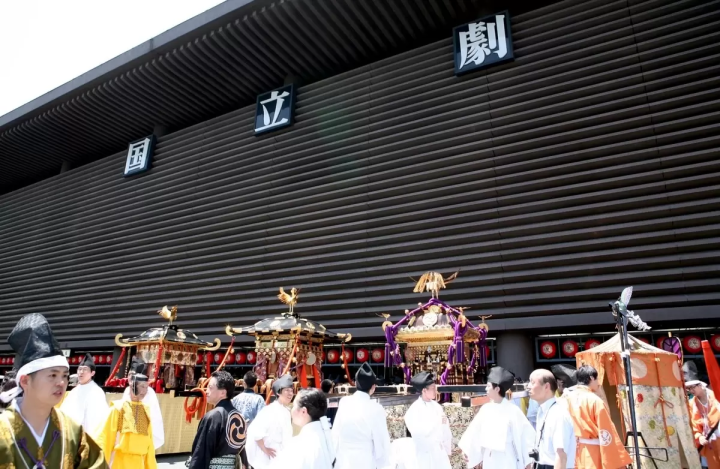
National Theatre
3. The Kokyo Gaien National Garden
If you continue with the procession, you will arrive at the Kokyo Gaien National Garden Outer Gardens. The closest place to the Imperial Palace is Sakashitamon Gate, one of the entrances to the palace. Nearby, you can also see the famous Nijubashi Bridge, so be sure to stop by!
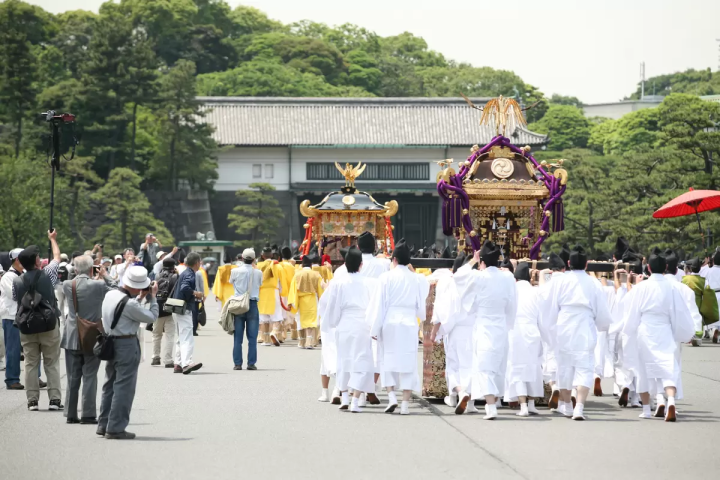
In front of the Sakashita Gate of the Imperial Palace
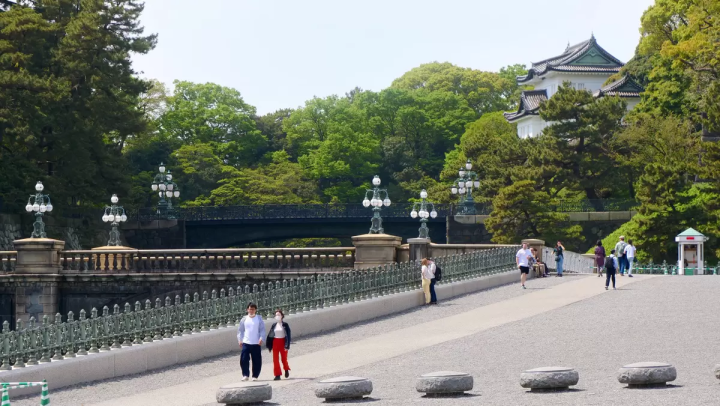
Nijyubashi Bridge
④ Marunouchi Nakadori and Tokyo Station area
From Sakashitamon, the group will first walk along Gyoko-dori Street, which leads to Tokyo Station, but will turn onto Marunouchi Nakadori Street along the way. Marunouchi Nakadori Street is a popular shopping street and cafe spot. If you get tired of walking, this is a great place to take a tea break.
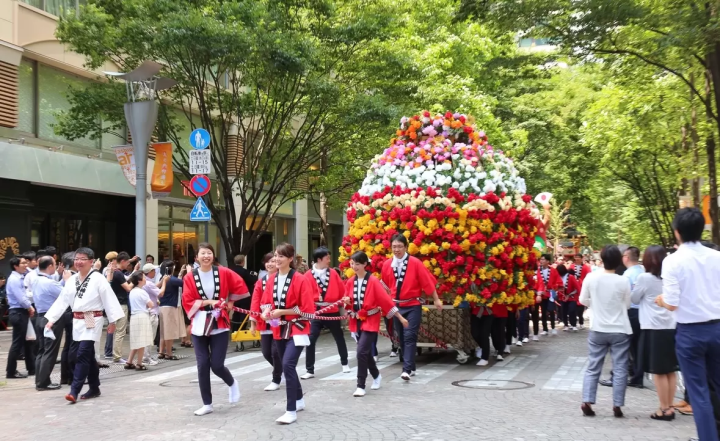
The tree-lined Marunouchi Nakadori is a place of relaxation in the big city
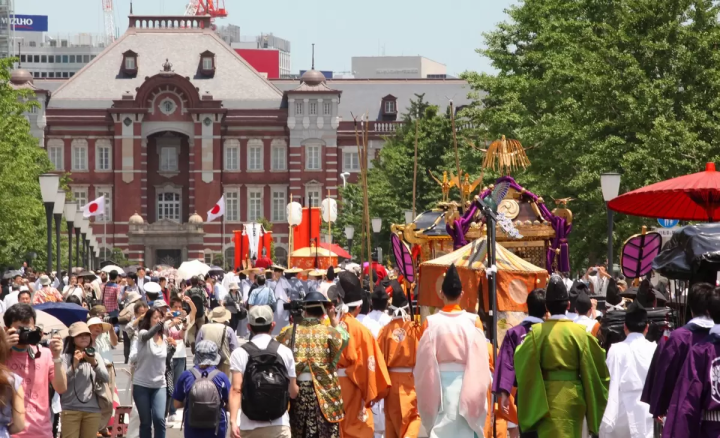
In front of Tokyo Station (Marunouchi side)
⑤ Ginza 4th Street
Ginza is one of Japan's most popular downtown areas. Located in the center of Tokyo, it is loved by many people. The beautiful harmony of skyscrapers and historical buildings is what makes it so appealing. Lined with luxury brand stores, first-class restaurants, and showrooms, it is a place that continues to transmit the latest trends. With the urban cityscape as a backdrop, you can take a good look at the traditional costumes of the procession as they make their way down the straight street.
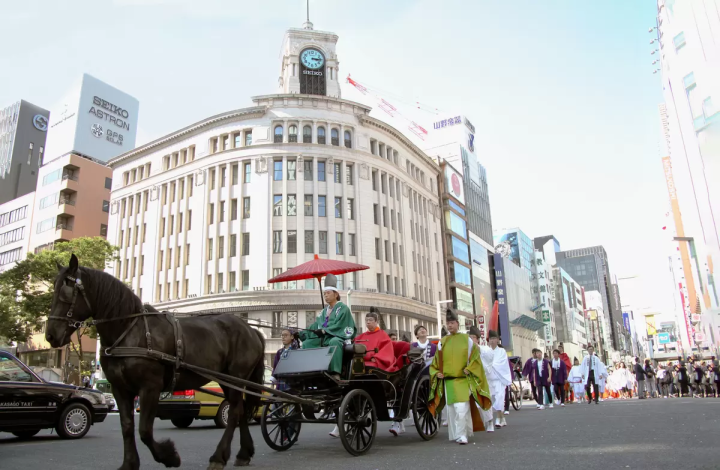
⑥ Hibiya area
The last spot we would like to introduce is the Hibiya area. The procession passes by the famous Imperial Hotel, and then goes along Hibiya Park, Japan's first Western-style park, for a while before returning to Hie Shrine.
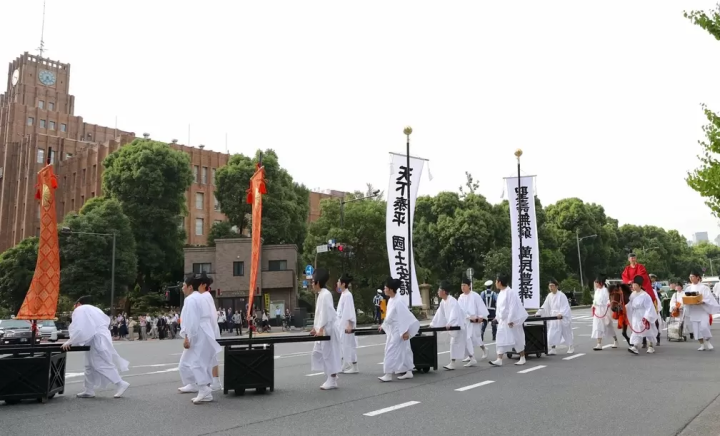
In front of Hibiya Public Hall
After viewing the Shinko Festival, you can take a break and enjoy shopping at HIBIYA OKUROJI, a commercial facility built under the railway overpass.
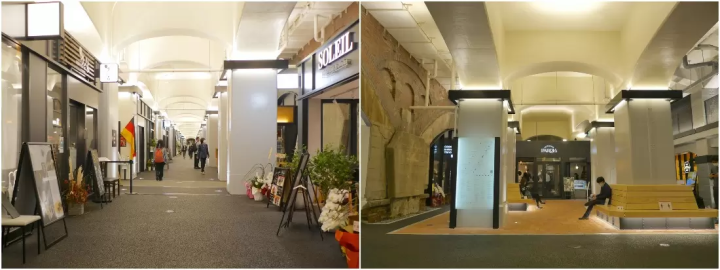
Tunnel-like area under the elevated railway
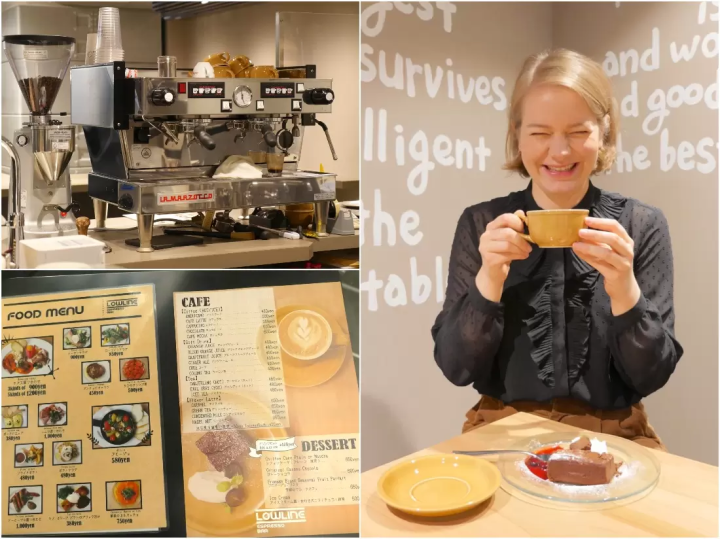
The coffee at the cafe "low line espresso & bar" inside HIBIYA OKUROJI is delicious, but the matcha latte is also recommended!
If the weather is nice, be sure to stop by Hibiya Park. You'll be sure to find the cute fountain and beautiful flowers soothing.
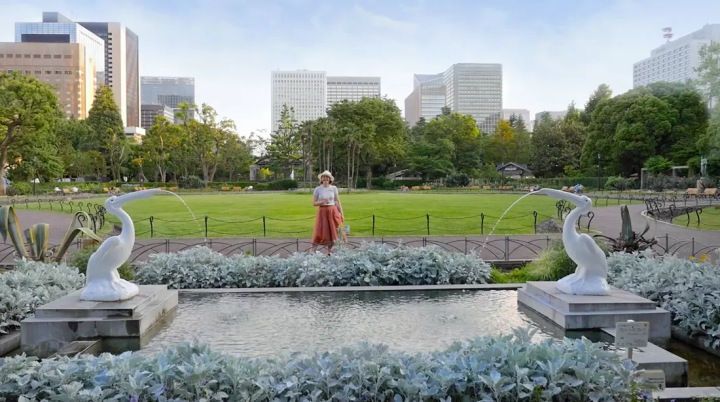
The Pelican Fountain in Hibiya Park is a favorite of Visit Chiyoda Editor-in-Chief Malai.
In addition, the commercial facility TOKYO MIDTOWN HIBIYA facing Hibiya Park is home to a number of excellent restaurants, making it the perfect place to dine. From the "Park View Garden" on the 6th floor, you can enjoy a different view of Hibiya Park and the Imperial Palace from above.

At Park View Garden in TOKYO MIDTOWN HIBIYA
The Sanno Festival's Shinko Festival is a special festival that can only be experienced once every two years. Why not take this chance to create some wonderful memories?
Sanno Festival "Shinkosai"
Date and time: Friday, June 7, 2024, 7:45-17:00
Sanno Festival Official Website: http://www.tenkamatsuri.jp/
Hie Shrine
2-10-5 Nagatacho, Chiyoda-ku, Tokyo
Google Maps: https://maps.app.goo.gl/MLzEckzQh45ZU7vr8
Nearest stations: Nagatacho Station, Akasaka-mitsuke Station, Tameike-sanno Station
We provide information on tourist spots and events in Chiyoda Ward, the center of Tokyo, including the Imperial Palace, Marunouchi, Hibiya, Akihabara, Kanda, Jimbocho, Ochanomizu, Kudanshita, Iidabashi, Hanzomon, and Kojimachi.
The contents on this page may partially contain automatic translation.
































![[Kanazawa] Enjoy the world of gold leaf to the fullest in the city with the highest production volume in Japan](https://resources.matcha-jp.com/resize/720x2000/2025/11/12-249564.webp)
![[2026] Family Winter Trip to Suzuka Circuit! – For Both Day trips and Overnight Stays!](https://resources.matcha-jp.com/resize/720x2000/2025/12/26-254097.webp)

![[2026] Top 5 Strawberry Picking Spots in Tokushima, Naruto| Farms and Access Guide for January to May](https://resources.matcha-jp.com/resize/720x2000/2025/03/06-227165.webp)
![[Yamanashi/ Hokuto City] 4 Hot New Spots Opening in 2026](https://resources.matcha-jp.com/resize/720x2000/2025/12/12-252747.webp)